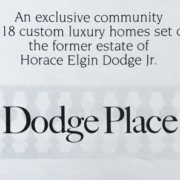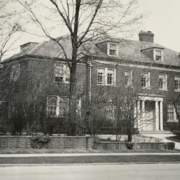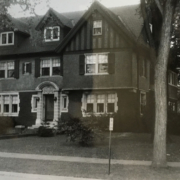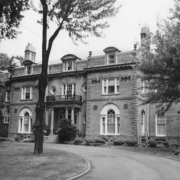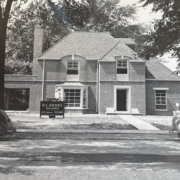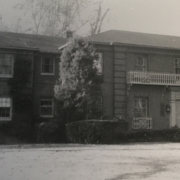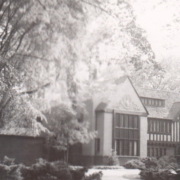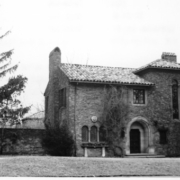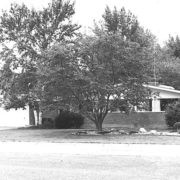Historical Architecture of Grosse Pointe – Dodge Place
Last week we presented 1017 Lake Shore, the former housekeeper’s residence that was originally part of the Edsel and Eleanor Ford Estate, designed by Albert Kahn and completed in 1929. This week we continue with the work of Albert Kahn. This nationally renowned designer worked on at least 20 projects in Grosse Pointe, from the modest to the massive, including residences, public buildings, and the entrance gates to Beverly Road. Sadly at least half a dozen of his major works have been demolished. This includes the former grand mansion, 17800 E. Jefferson, which is now the location of 18 homes on Dodge Place.
Before we tell the story of the development of Dodge Place, we will take a look at the splendid English Tudor inspired residence that originally graced the property. Completed in 1905, for Charles M. Swift, 17800 E. Jefferson was one of the earlier year-round residences to be constructed in Grosse Pointe. The handsome 28-room residence, constructed from grey limestone, was located on a lot 1,200 foot deep, with 190 feet of water frontage. Not much is known about the house but based on an article in the Detroit Free Press (1918) we understand the ground were beautifully laid out with trees and shrubbery, a tennis court, and a bowling lawn. The house was designed by Albert Kahn with credit to Ernest Wilby, who was an associate of Kahn. Wilby, born in England in 1869, was a talented designer who worked for architects in Detroit, Toronto, New York, and London. He was best known for his work as Albert Kahn’s associate, serving as his chief designer from 1903 until 1918. Image courtesy of: The Library of Congress.
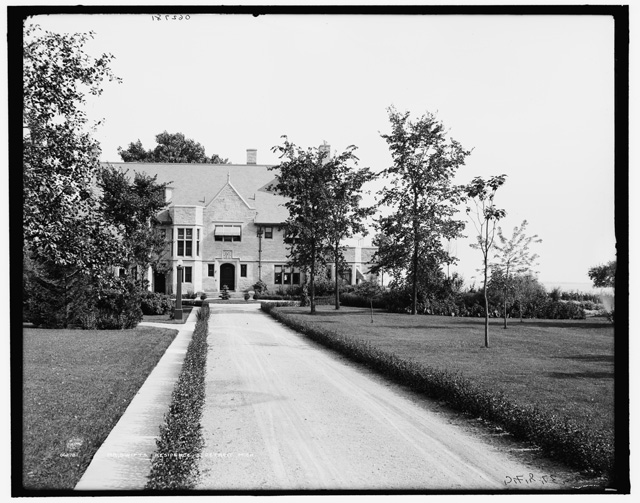
It is not clear how long Charles Swift resided at 17800 Lake Shore, but we do know Capt. Herbert Hughes purchased the residence. Based on the article in the Detroit Free Press it is reported Mr. and Mrs. Hughes sold the property, in April 1918, after Capt. Hughes went to France for military service with Mrs. Hughes accompanying him. John Francis Dodge, manufacturing pioneer and co-founder of Dodge Brothers Company, then purchased the residence for a rumored price of $250,000 (around $4.2 million today). The property was located next to 17840 E. Jefferson, “Rose Terrace #1”, (built in 1912 – also by Albert Kahn – demolished in 1934) which was owned by John’s brother, Horace Elgin Dodge.
Research in Tonnancour, Volume 1, states that “in 1926, 17800 E. Jefferson was purchased by Anna Thompson Dodge, Horace Dodge’s widow (both John and Horace Dodge passed in 1920). The property was a gift for her son, Horace, Jr. He resided in the home whenever he was in Grosse Pointe, until his death in 1963. After that, his daughter Mrs. Anna Ray Ranger, owned the property until it was razed in 1985. For many years the property became known as the “Ranger Estate”. By this point the address had been changed to 17840 E. Jefferson.
In 1985, 17840 E. Jefferson (formerly 17800 E Jefferson) was purchased by Chris Blake, president of The Blake Company. It was acknowledged to be the last big estate left in the City of Grosse Pointe and was reportedly in a state of disrepair. It was razed in the winter of 1985-6.
Source: Detroit Free Press (April 1988). Following the demolition, the plan for the 7.6-acre lake front property was to subdivide the land to create Dodge Place, to adjoin what is now the Rose Terrace subdivision. The construction of the first nine houses began in the summer of 1986. An article in Heritage Magazine (June 1986) states “the new 18 homes that would form Dodge Place would be traditional one-and-one-half and two-story Georgian, New England, and French Colonial style properties.” At the time the developer, The Blake Company, was focused on “controlling the lot and the designs to maintain the integrity of the community. Priced from $300,000 to $750,000, the homes would feature floor-to ceiling windows, vaulted ceilings, large functional bathrooms, a large informal room (family room or great room), a smaller formal room (typically a library), and a big open kitchen with lots of light.” The article continues, “the subdivision itself will have the Impact of spaciousness’, said Blake. Blake then confirmed he had “saved as many of the original trees as possible and planned to plant more, including a row of trees, perhaps red maples, along the curving boulevard that would provide access to the development. Blake also confirmed he managed to save the carved limestone balustrade that surrounded the original formal gardens. Blake also shared a story about the hazards encountered in building on the grounds of demolished mansions. “Taking out the pool by the lake, Blake stumbled across a partially caved-in underground room, accessed through the pool house.” Blake also recounted how he found gin in old bottles with glass stoppers and a Shettler’s Whiskey bottle that was in the basement of the Ranger Estate. He subsequently donated his finds to the Grosse Pointe Historical Society. Source: Heritage magazine (June 1986. Image Courtesy of: Junior League of Detroit’s Designers’ Show House Program Book (1986). Overhead image courtesy of: Google.com


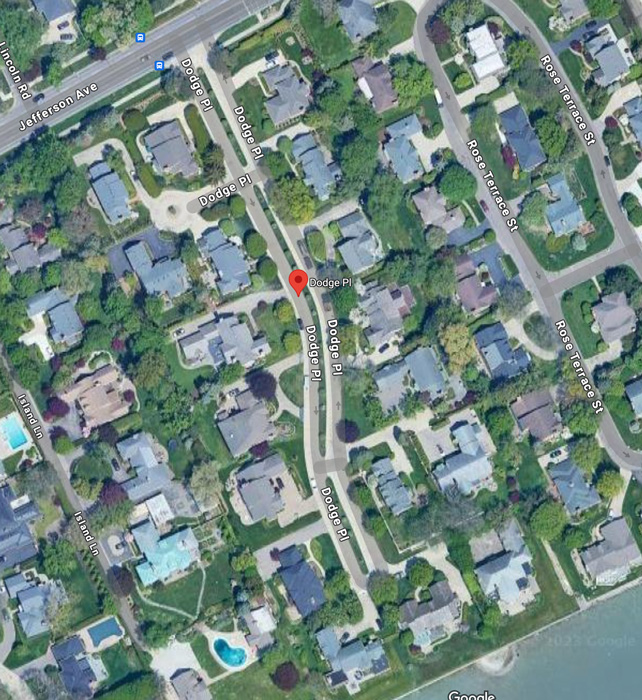
While many of the grand mansions may have been razed, we can take comfort in knowing that elements of the former estates have been retained and been repurposed in homes and businesses not only in Grosse Pointe, but nationally and across the world. For instance, six million dollars’ worth of Mrs. Horace Dodge’s finest belongings, from Rose Terrace, were flown to London, England for sale. Meanwhile, slightly closer to home, the keystone, balustrade, and stone carvings from Rose Terrace are now located on the facade of a manufacturing company in Troy. In Grosse Pointe, several of today’s homes have elements from the stunning mansions that once adorned Lake Shore including mantlepieces, fireplaces, paneling, door hardware (such as hinges) hardwood flooring, and entranceways.
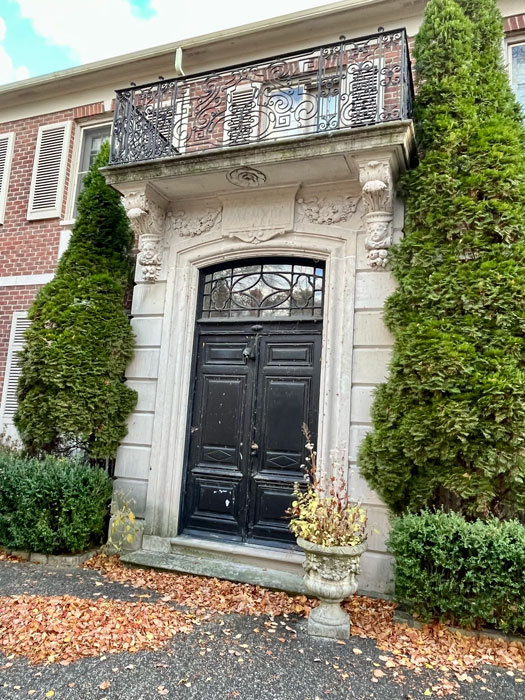
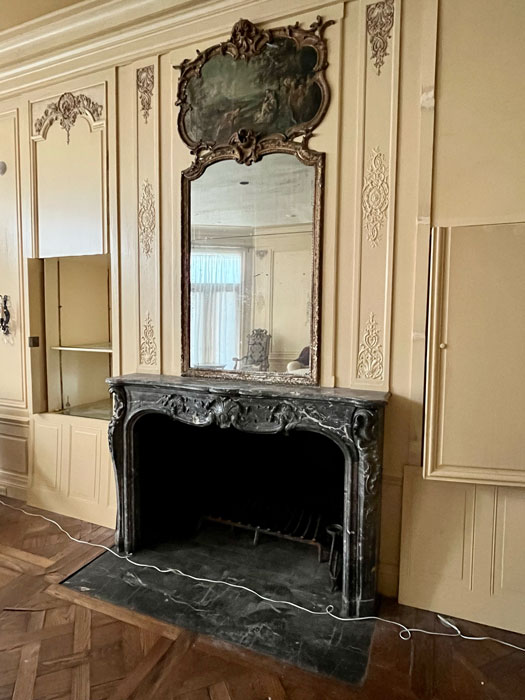
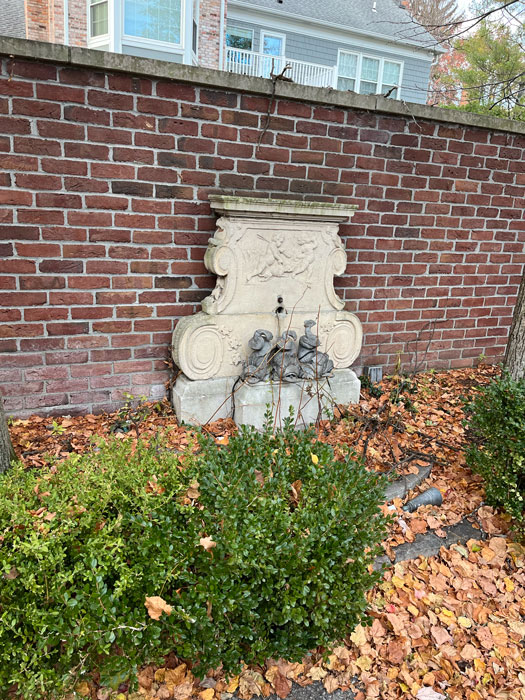
The 18 homes on Dodge Place, a quiet cul-de-sac, were completed between 1986-1987. The subdivision is unique in that it is located on the border of Grosse Pointe City, and Grosse Pointe Park, which means owners have access to both parks. Numbers 1-3 Dodge Place enjoy exquisite views of Lake St. Clare. A view that was once enjoyed by Charles M. Swift and his family, Horrace Dodge Jr., and Anna Ray Ranger in their former grand mansion, 17800 E. Jefferson, designed by Albert Kahn.
*Photos courtesy of the Higbie Maxon Agney archives unless stated.
** Research, information, and data sources are deemed reliable, but accuracy cannot be fully guaranteed.
Written by Katie Doelle
Copyright © 2023 Katie Doelle

